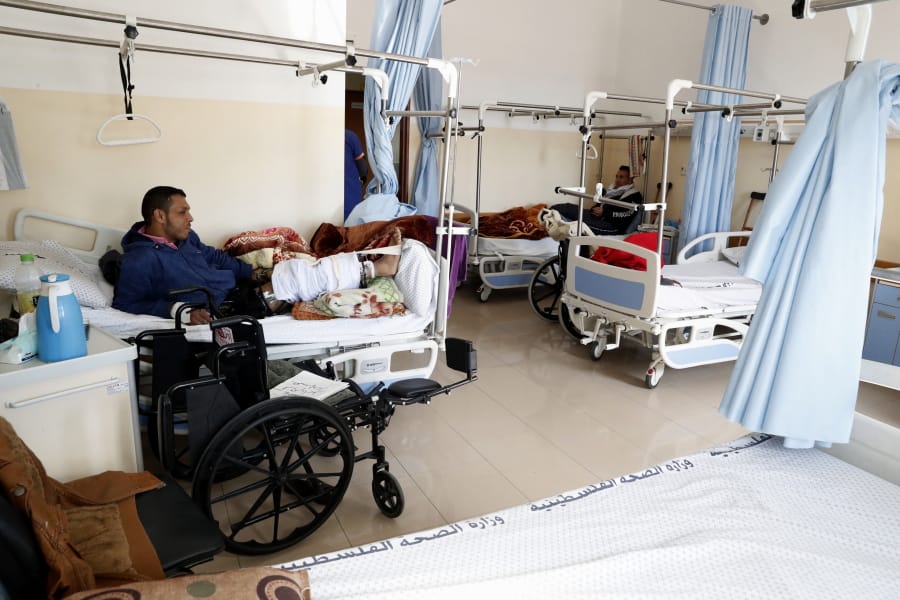KHAN YOUNIS, Gaza Strip — Mansour al-Masri has been largely confined to bed for almost two years, iron rods protruding through bandages wrapping his lower leg.
Since an Israeli gunshot fractured the bones of his left leg in May 2018, the 24-year-old blacksmith has undergone 18 operations, briefly regaining the ability to walk with a limp before returning to the hospital. He is terrified he will join the 158 Palestinians who have had legs amputated after being wounded in protests along the Israeli frontier.
On Thursday, the World Health Organization and the local Health Ministry offered some hope, officially inaugurating Gaza’s first limb reconstruction center, which aims to provide the wounded with permanent specialized and centralized care.
“It’s the first time I (have entered) such a department and feel things are working out with me,” said al-Masri, who has been receiving treatment at the center since it began operations three weeks ago.
Al-Masri is among thousands of protesters shot by Israeli forces during 20 months of weekly demonstrations along the fence separating the Gaza Strip from Israel.
Gaza’s Hamas rulers launched the protests in March 2018 to press Israel into lifting a crippling blockade it has imposed with Egypt’s backing since the militant group seized power in 2007.
During the demonstrations, Israeli fire has killed 215 Palestinians, most of them unarmed, and a Palestinian sniper killed an Israeli soldier.
Israel says it is defending its border against protesters who have lobbed explosives, set tires on fire along the border and tried to cut through the fence to infiltrate Israel. But it has come under international criticism and been accused of using excessive force due to the high casualty count and large number of unarmed people who were wounded.
In all, some 8,000 people have suffered gunshot wounds, straining Gaza’s over-burdened health care system. Health authorities have appealed for help to deal with the influx of injuries, especially those shot in the limbs, to reduce the number of disabilities and amputations. These difficult-to-treat injuries can take up to two years of follow-up, with bone, muscle, soft tissue and nerve surgeries. Serious bone infections are common along with signs of antibiotic resistance.
The new limb center, built by WHO in coordination with the Hamas-run Health Ministry, is located at the Nasser medical complex in the southern city of Khan Younis.
The area had a protest camp before Hamas halted the demonstrations at the start of the year. The ward features 32 beds, two dedicated operating theaters and 25 staff. Although Hamas has been branded a terrorist group by Israel, the U.S. and the West, WHO said it had to work with “local authorities” to launch the center.
Dr. Gerald Rockenschaub, WHO’s director in the Palestinian territories, acknowledged the center is “too late” for those who already lost their legs, but there are 600 patients in need of limb reconstruction surgeries and hundreds more waiting to be assessed. “What we really want to achieve with this unit is to not see further amputations, to not see further long-term disability,” he said.
Patients complain that under-resourced hospitals did not provide proper, in-depth and sufficient treatment.
Dr. Mahmoud Matar, head of the surgery department at the Health Ministry, said this type of gunshot wound typically requires four operations and the ministry has carried out 4,000 such surgeries in the past two years, despite the severe shortages of equipment and tools. He said 25% to 30% of these cases end with amputations.
For wounded Palestinians like al-Masri, the new limb center is raising hopes that their odds of recovery will increase.
“I just hope I will be able to walk normally again,” he said.



